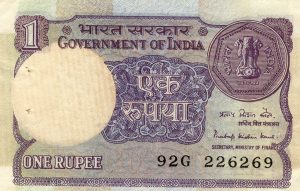Who signs the Indian rupee currency notes? Now, it’s a simple question with a simple answer for a layman, but the answer requires a detailed explanation is required when we consider the economics.
Short answer to the question of who is the signatory for the Indian rupee currency notes:
— the governor of the Reserve Bank of India (RBI). The Rupee 1 currency notes, being legally accepted as a coin, are an exception.
The Indian currency is the rupee, or INR for short. Like any currency, the value and recognition of the Indian rupee currency comes from the authority of the issuer of the currency, which is also the signatory to the currency.

Who Signs the Indian Rupee?
Short answer: the governor of the Reserve Bank of India, All currency notes are a form of promissory note issued by the central banks banks, which are backed by the state (the government of the country). In India, the currency notes are issued by the Reserve Bank of India, which is regulated by the legislation enacted by the Indian parliament, the elected representatives of the country.
As for the currency notes above the value of Rs 2 and onwards, the Indian rupee currency notes bear the signature of the governor of the Indian central bank, the Reserve Bank of India. The Indian central bank (RBI) cannot mint coins; it can issue currency notes only.
However, all Indian rupee notes are not issues and signed by the RBI governor.
The Rupee 1 currency notes are an exception, which are signed by the finance secretary. The secretary to the country’s finance ministry of finance of the elected governments sign the Rupee 1 currency notes.
All Indian rupee currencies (except Re 1) bear a promise to pay the bearer the equivalent of the currency denomination. So, the currency notes in circulation are a liability for the RBI. If the bearer asks the RBI to pay, the central bank will have to provide the equivalent amount in coins. In contrast, the Indian rupee coins are an asset and do not create any liability on the government of India or the RBI.
Who prints & signs the Re 1 notes in India?
The Re 1 currency is printed and issued by the government of India, which mints and issues all coins for the Indian rupee. Due to technical reasons, the Re 1 notes are not considered as a currency, but a coin. This means the Re 1 notes can be printed and issued by the government, which is the right authority to issue coins of Indian rupees.
The Coinage Act, 2011, which replaced the Coinage Act, 1940 reads as:
In this Act, unless the context otherwise requires,–(a) “coin” means any coin which is made of any metal or any other material stamped by the Government or any other authority empowered by the Government in this behalf and which is a legal tender including commemorative coin and Government of India one rupee note.Source: RBI
24. Denominations of notes: (1) Subject to the provisions of sub-section (2), bank notes shall be of the denominational values of two rupees, five rupees, ten rupees, twenty rupees, fifty rupees, one hundred rupees, five hundred rupees, one thousand rupees, five thousand rupees and ten thousand rupees or of such other denominational values, not exceeding ten thousand rupees, as the Central Government may, on the recommendation of the Central Board, specify in this behalf.
In this respect of the highest value of the Indian rupee coin that can be minted, the Coinage Act, 2011 says the following.
Coins may be minted at the Mints or at any other place authorised under the proviso to section 3 of such denominations not higher than one thousand rupees and of such dimensions and designs and containing such metals or mixed metals of such composition or any other material as may be prescribed by the Government.
